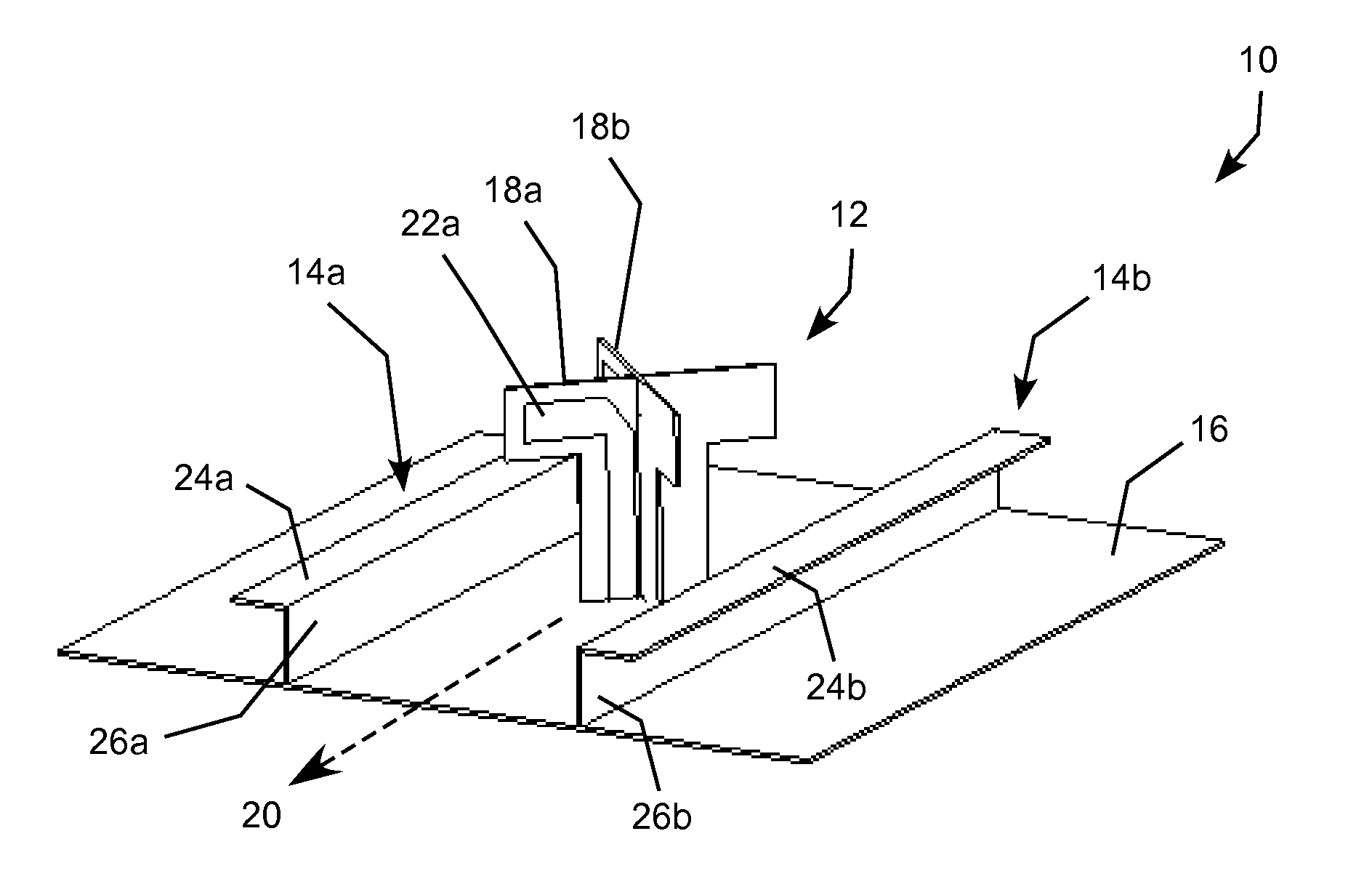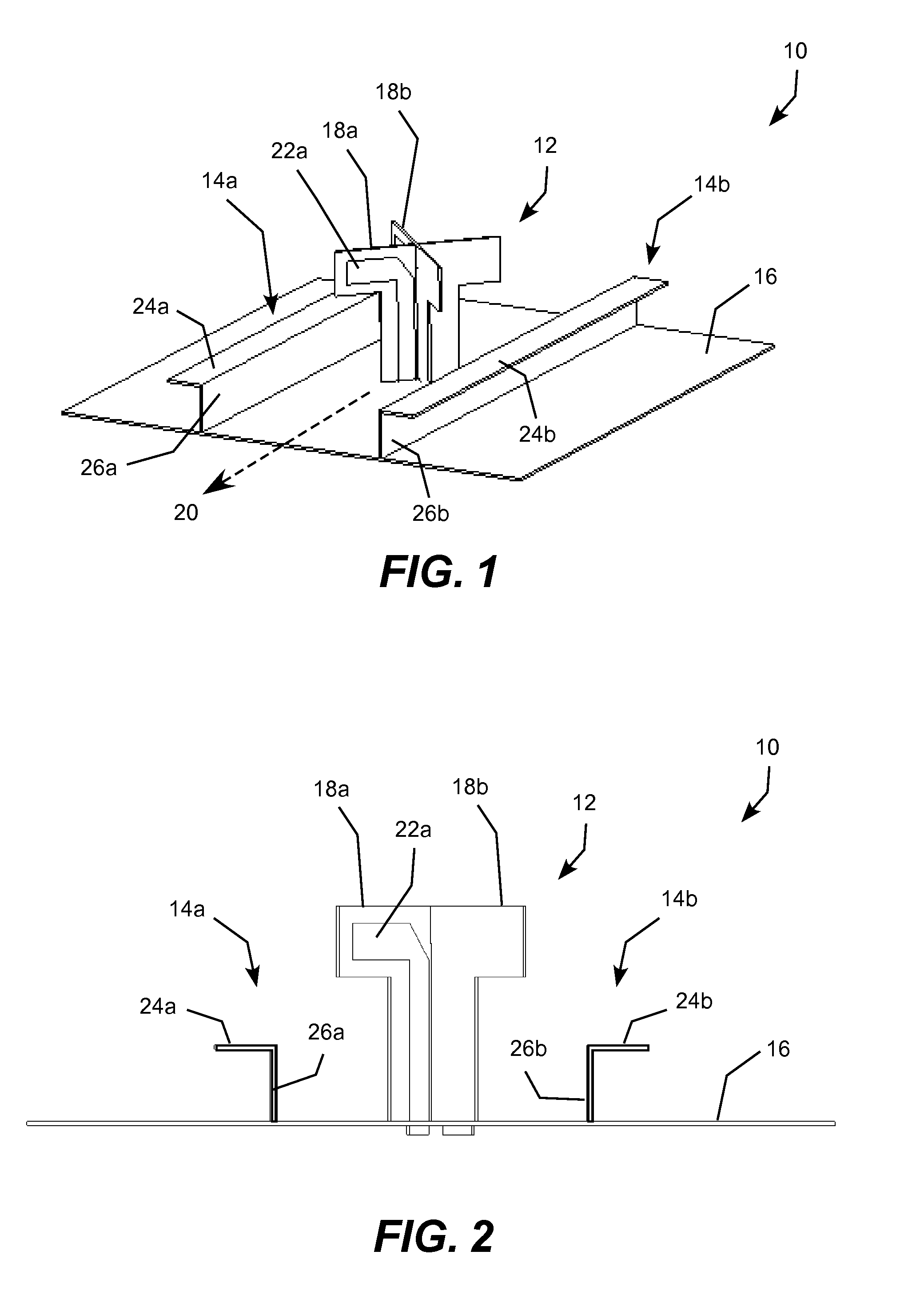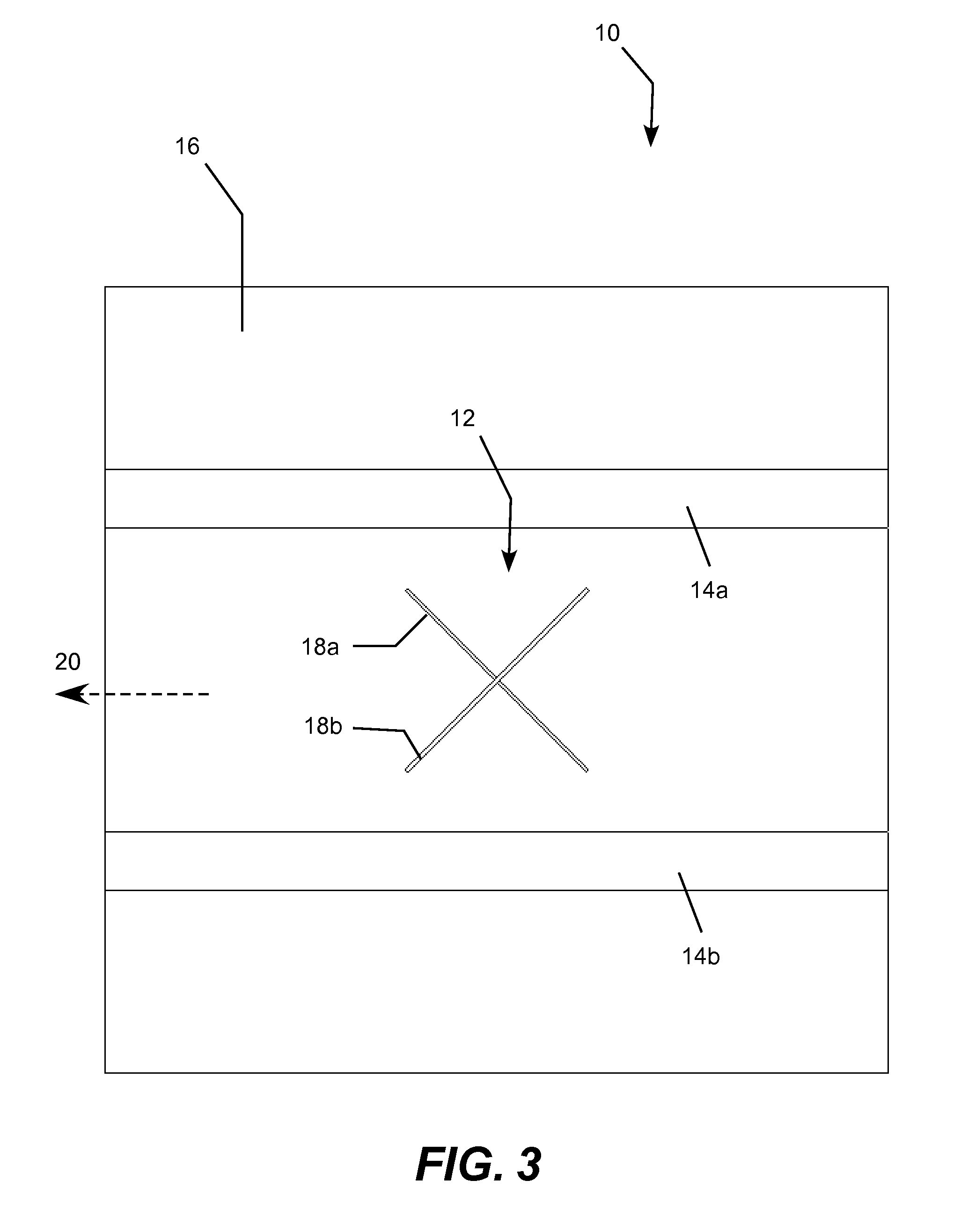Base station antenna with beam shaping structures
- Summary
- Abstract
- Description
- Claims
- Application Information
AI Technical Summary
Benefits of technology
Problems solved by technology
Method used
Image
Examples
Embodiment Construction
[0038]The present invention may be embodied in a wide range of dual polarization antennas with one or more arrays of dipole antenna elements and one or more beam shaping structures designed to confer desired vertical polarization E(theta) and horizontal polarization E(phi) beamwidth and bandwidth characteristics. For example, the invention may be embodied in a single-band antenna elements with one array of dipole antennas and one arrangement of beam shaping structures, a dual-band antenna with two arrays of dipole antenna elements and two arrangements of beam shaping structures, a triple-band antennas with three arrays of dipole antenna elements and three arrangements of beam shaping structures, and so forth. The beam shaping structures are typically implemented as a pair of inverted-L shaped flange sections connected to the ground plane running the length of the associated array with one beam shaping channel located on each side of the antenna array. The flange sections may be elec...
PUM
 Login to View More
Login to View More Abstract
Description
Claims
Application Information
 Login to View More
Login to View More - Generate Ideas
- Intellectual Property
- Life Sciences
- Materials
- Tech Scout
- Unparalleled Data Quality
- Higher Quality Content
- 60% Fewer Hallucinations
Browse by: Latest US Patents, China's latest patents, Technical Efficacy Thesaurus, Application Domain, Technology Topic, Popular Technical Reports.
© 2025 PatSnap. All rights reserved.Legal|Privacy policy|Modern Slavery Act Transparency Statement|Sitemap|About US| Contact US: help@patsnap.com



